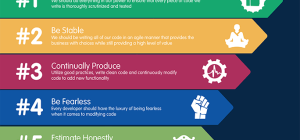The industry of OTT applications is booming and evolving, but one thing remains unquestionable – it’s the user-centric design that captures and retains user attention to your OTT app. According to studies, 90% of users claimed they would stop using the platform due to poor UI/UX. This puts a challenge on OTT app creators who have no other choice but to craft OTT apps that not only cater to user preferences but exceed them. But how do you know what keeps users engaged and delivers them an unparalleled experience?
This blog post will go through the key aspects and best practices for building an intuitive UI and seamless UX journey for OTT applications.

Ensure Compatibility with Multiple Devices
An OTT app design must be versatile, offering seamless compatibility with smartphones, tablets, computers, and smart TVs. This multi-device compatibility ensures that users enjoy a consistent and flexible viewing experience.
Achieving consistency and excellence on multiple devices may seem an overwhelming task that the Perfsol designer team handles with ease. Their focus is to build OTT applications that are not only versatile but also maintain a consistent user experience, whether accessed on smartphones, tablets, computers, or smart TVs.
Impress from the First Shot
First impressions matter, and 94% of first impressions are design-related. Unlike traditional TV, OTT applications require a seamless onboarding process to encourage continued app use. This includes easy sign-up procedures, intuitive user interfaces, and quick access to content.
Develop Multiple Profiles and Screens
Eliminate the age battle for control over the remote by allowing the creation of multiple profiles and screens within one account. This will allow each member of the household to access personalized interfaces tailored to their watching preferences.
Give Clear Navigation Menu
Users should be able to effortlessly browse through various content categories to find what they’re looking for, whether it’s live TV, movies, series, or documentaries. In addition, user-friendly layouts, intuitive search capabilities, and logical menu configurations simplify the process of locating their desired content.

Divide Content Into Categories
Organize content into categories such as genres, release years, languages, or themes to let viewers discover the type of shows they’re looking for with ease. Additionally, add filtering options to help viewers customize their viewing experience and search content for various criteria.
Enable Interactive Video Preview
Let people preview videos before committing to watch. Having a sneak peek of content will make your viewers more confident in their decisions on what they want to watch, thereby improving user engagement levels.
Provide Trend-based Recommendations
People enjoy staying up to date with popular content. Offer recommendations based on what’s popular or new to provide users with a sense of being in sync with the entertainment world.
Focus on Accessibility and Inclusiveness
A truly effective OTT app design goes beyond aesthetics and functionality; it ensures accessibility for all users, including those with varying abilities. This commitment to inclusivity involves integrating features like closed captions for the hearing impaired and audio descriptions for the visually impaired. Additionally, it means designing for various interaction modes, such as voice commands and adaptable text sizes, to accommodate users with motor or visual limitations.
To sum up, strong UI/UX is no longer a luxury for smart TV platforms; it’s a necessity for survival and success. By prioritizing a user-centric design approach, OTT providers can enhance engagement, conversions, and build long-lasting customer loyalty in the increasingly competitive OTT app industry.







